3D printing is a popular and versatile technique that comes with a plethora of applications and benefits. The term is synonymous with additive manufacturing which is an umbrella term for all 3D printing techniques. Additive manufacturing units build any part one layer at a time and bring a long list of advantages to the table.
Moreover, all the different types of 3D printing techniques allow you to choose between material types and get the right combination of surface finish, durability, speed, and cost. This article takes a look at the common methods of 3D printing and explains how they work to help you make the best choice for your project.
Additive Manufacturing: A Brief Overview
As stated, Additive manufacturing is the umbrella term that describes all methods of 3D printing. Any 3D printing technique uses a CAD design from a computer and builds up the precise geometric shape in layers. That’s where the name additive manufacturing comes from. Contrary to this technology, traditional techniques generally require you to remove the surplus materials to create the shapes you need.
In the beginning, certain thermoplastics were the only suitable materials for 3D printing. This restricted the applications of the concept because plastics don’t have the necessary physical characteristics for many high-performance industries. However, the situation has improved with time as different techniques allowed the use of other materials like metals, ceramics, and even organic materials.
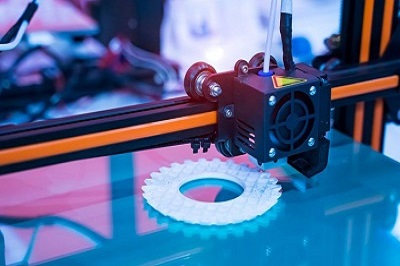
Even then, thermoplastics are among the most popular materials for 3D printing technologies today. Acrylonitrile Butadiene Styrene (ABS), Polylactic Acid (PLA), PolyCarbonate (PC), and Polyvinyl Alcohol (PVA) are some of the most common choices across various industries because of their versatility and suitable characteristics.
Types of 3D Printing Techniques
1 – Binder Jetting
Binder jetting is a simple method of 3D printing that relies on an industrial bonding agent to join different layers of a part. In binder jetting, the input is the key material in powder form which the printer deposits with a thin layer of a binding agent.
Furthermore, the process works with materials like sand, some polymers, metal powders, and ceramic metal compounds. This is among the low-cost 3D printing methods that can produce large volumes at a low turnaround time.
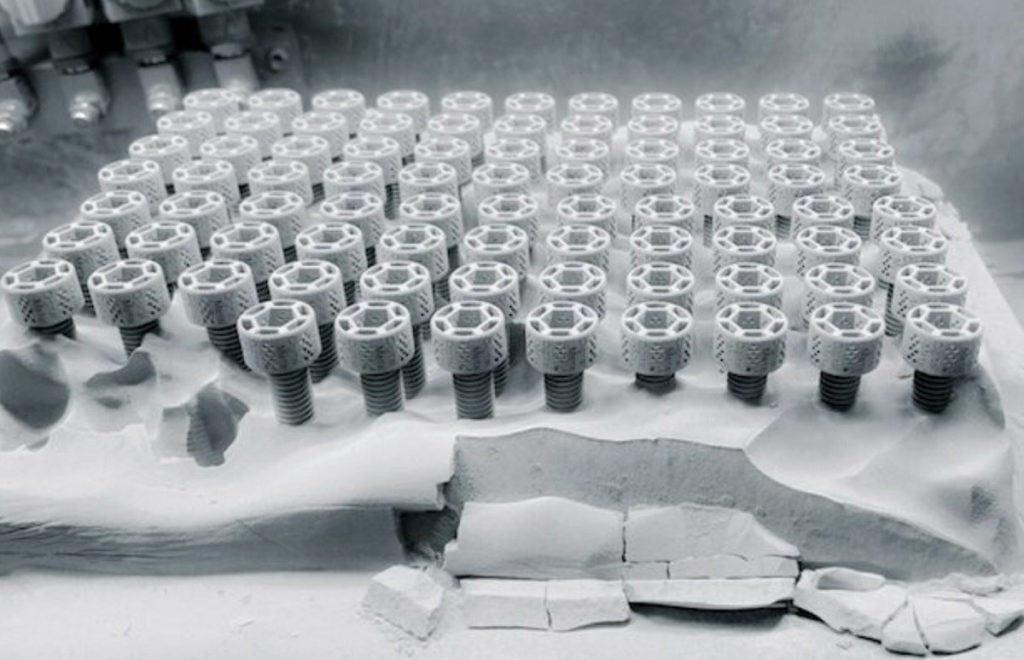
Moreover, the design flexibility and excellent color reproduction along with the dimensional accuracy of 0.2 mm (metal) come at a cost. The mechanical characteristics of your results will not be that good, thus limiting this technique to low-intensity applications only. For instance, some of the most common applications of Binder Jetting are:
- Metal parts
- Realistic models
- Low-cost prototypes
- Sand casting molds
2 – Material Jetting
Another popular choice among the types of 3D printing technology is the material jetting process. In this case, the 3D printer uses liquified material droplets to build each layer.
One thing that makes this process unique is the ability to use different types of material on a single object. As a result, you can fabricate parts with mixed colors and textures which can give you a customized aesthetic look of the final product.
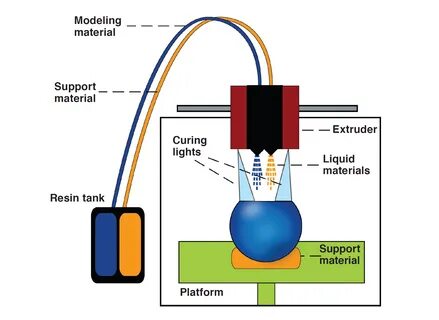
Generally, photopolymer resin is the only viable material for this type of 3D printing process. It delivers the most detailed and best surface finish with a dimensional accuracy of 0.1 mm, but the parts are not suitable for any mechanical applications because of their weak characteristics and brittleness.
Here are some of the most common applications of the material jetting process:
- Aesthetic prototypes
- Injection mold prototypes
- Elaborate medical models
- Design presentations
3 – Material Extrusion
Extrusion is a common industrial process where you force any material near its melting point through a smaller opening. Similarly, the 3D printing technique works on the same principle. In most cases, the extrusion process uses plastics and composite filaments. For instance, PLA, ABS, PET, Carbon Fiber, and other materials are quite common.
During the process, materials are pushed through a small nozzle that heats them to the melting point and deposited on a predetermined path that forms a layer.
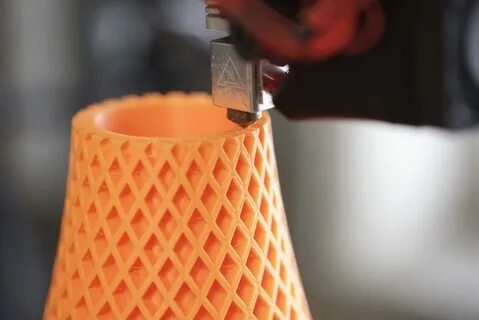
The process repeats several times until your complete the entire part. Today, you can use extrude biomaterials, edible items, and a variety of other materials, but PLA, ABS, and other plastics are the most common.
Material extrusion is by far the lowest-cost 3D printing technique with decent accuracy and versatility. That’s why you’ll find that most domestic 3D printers use this type of 3D printing technology as it’s more common and easier to handle.
Here are some of the most common applications of material extrusion in 3D printing:
- Electronic housings
- Form-fitting
- Fixtures
- Investment casting patterns
4 – Vat Polymerization
This is a unique 3D printing process that uses a light source to cure a photopolymer resin. The material suitable for this is only photopolymer resin that’s available in many colors and forms. This method produces an exceptional surface finish and allows for elaborate and complex geometries.
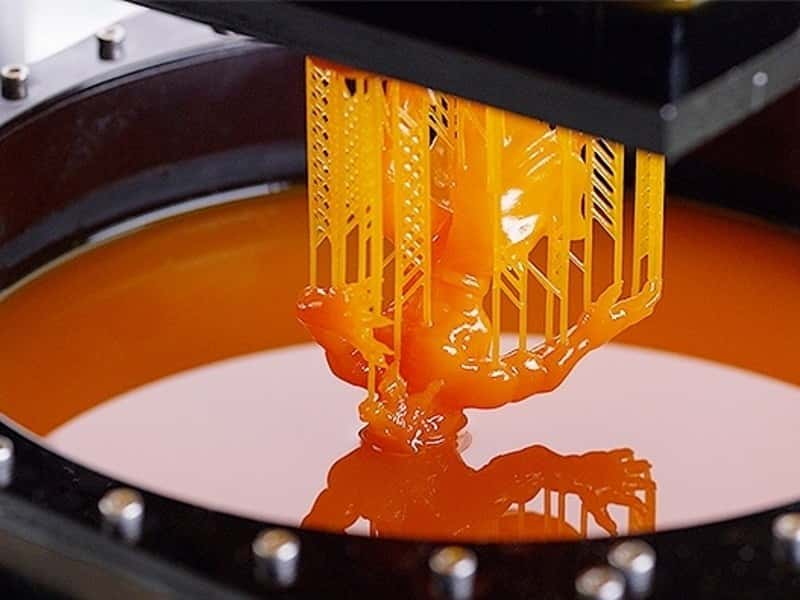
The vat polymerization technique is often further characterized into several types. Here are the three main ones:
- Stereolithography (SLA)
- Digital light processing (DLP)
- Masked stereolithography (MSLA)
Moreover, multiple other forms are also in research that further improve the application and the versatility of this technique. The main concept is similar. However, the difference between all these forms is the light source, which actually plays an integral role in the curing process.
For instance, some of the most common applications where you use vat polymerization 3d printing are listed below:
- Injection molds
- Polymer prototypes
- Design presentations
- Dental fixtures
- Medical parts
- Jewelry industry
5 – Powder Bed Fusion
This is among the most advanced types of 3D printing with a lot of potential in many high-end applications. Powder bed fusion works by focusing a thermal source over a small area to induce fusion between material layers in their powder form.
For instance, the process works on most thermoplastics, ceramics, and metals to deliver an exceptional dimensional accuracy of 0.3%. Some of the common 3D printing processes are Selective laser sintering (SLS), selective laser melting (SLM), electron beam melting (EBM), direct metal laser sintering (DMLS), and Multi Jet Fusion (MJF) to name a few.
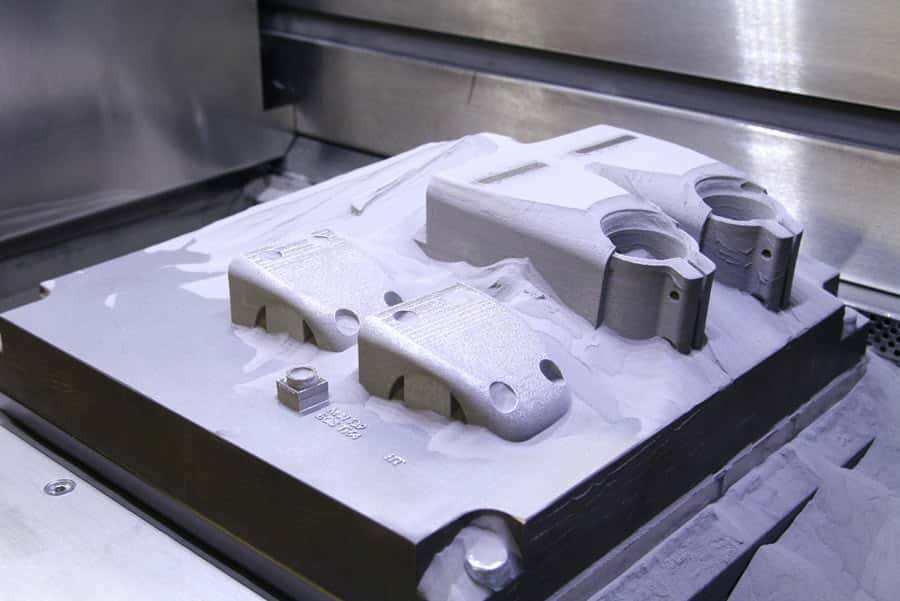
To illustrate this, here are some common applications that rely on the powder bed fusion technique:
- Functional metal parts
- Low-volume production
- Hollow designs
6 – Direct Energy Deposition
Direct energy deposition is a 3D printing technique that requires no support structure and works simultaneously to deposit and cure the layers. Moreover, the technique relies on either an electron beam, powerful laser, or plasma to highly energize material near its melting point to build the layers.
The applications of DED are not limited to building things only. The unique process repairs objects and that’s where you’ll generally see it more often.
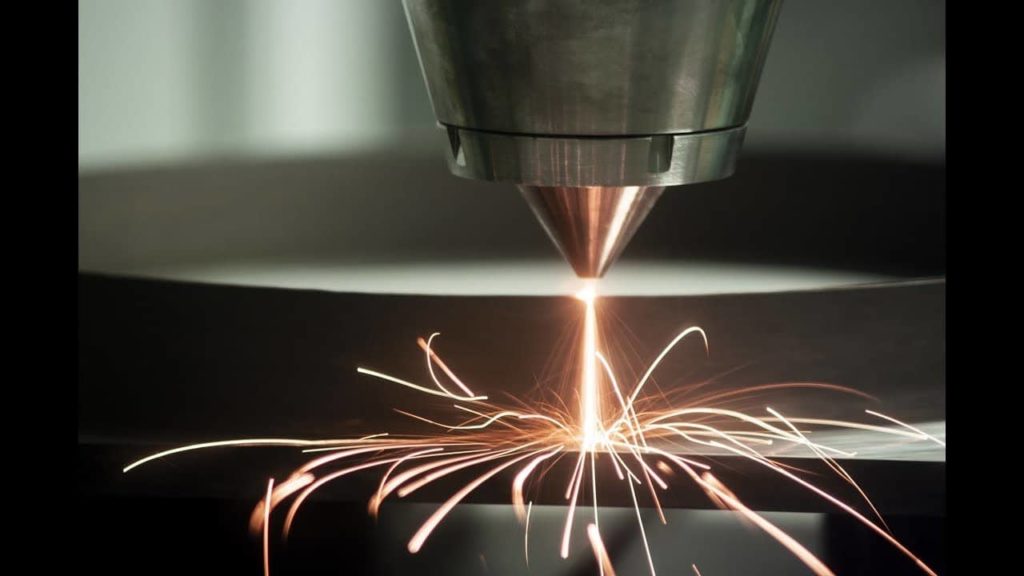
The most common types of processes are LENS, EBAM, Cold Spray, and others. Furthermore, the DED process is limited to metals only and works well with both wires and powders. You will, however, need to spend a lot of money on post-processing, which doesn’t make it a viable option for many industries.
For instance, some of the most common applications of DED are:
- Repairing high-end components
- Functional prototypes
7 – Sheet Lamination
Just as its name suggests, sheet lamination is a technique that stacks extremely thin sheets of metal over each other to produce a 3D object. However, this process is quite inaccurate but produces extremely quick and economical results. Thereby presenting limited avenues for functional applications.
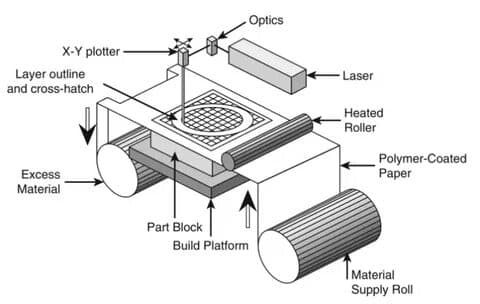
Generally, the sheet lamination process uses paper, polymer, or thin sheets of metal for this process. The most common processing technologies are Laminated Object Manufacturing (LOM) and Ultrasonic Consolidation (UC) which produces a lot of waste and require further processing of the part before use.
Some of the most common applications of the sheet lamination process are;
- Nonfunctional prototypes
- Design viability assessment
- Presentation models
- Multi-color prints
- Casting molds
Make effective prototypes without any hassle, contact RapidDirect for premium 3D printing services at the best cost.
Common Applications of 3D Printing
3D printing is often associated with rapid prototyping and rightly so. It’s one of the most common applications of this technology today. However, methods of 3D printing evolved with time and cover several new domains now.
Today, different 3D printing techniques are essential for several industrial sectors. Here are some of the areas where 3D print method is playing an integral part to drive innovation and growth.
1 – Aerospace
The aerospace and defense sector has a lion’s share when it comes to applying 3D printing to its processes. For instance, the market for types of 3D printing in the aerospace sector exceeds $10.4 billion and continues to grow with time.
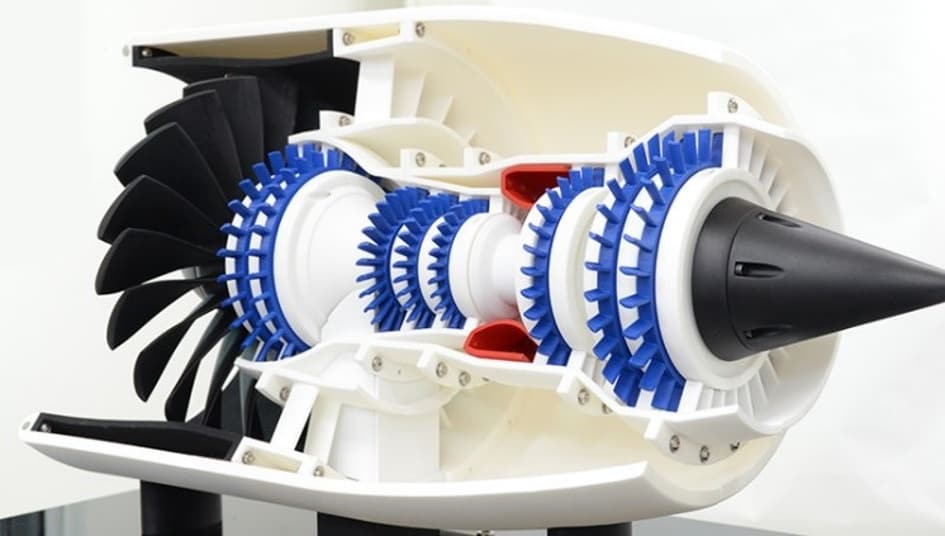
Moreover, rapid prototyping is not the only practical application of different 3D printing methods in the aerospace sector. Starting from tools to the development of lightweight components and even structural elements of aircraft, the technology continues to facilitate material efficiency. Resulting in more opportunities of reducing overall costs without compromising the quality.
2 – Automotive
The Automotive sector is the next big thing when it comes to the potential applications of 3D printing types on a mass scale. The global demand for different types of 3D printing continues to rise exponentially and experts believe that it’ll give tough competition to the aerospace industry for a top spot in the near future.
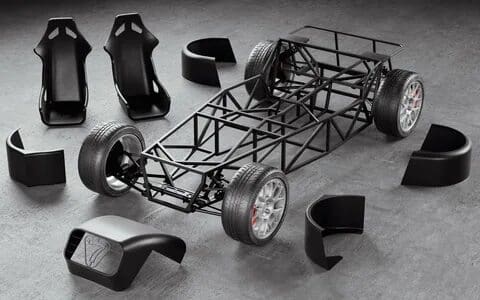
Additionally, the development of new 3D printing technology types coincides with increased demand for more streamlined cars and lightweight components. Similarly, traditional manufacturing approaches can’t keep up with the current demands of the sector and 3D printing seems to be the next answer.
Today, rapid prototyping is the predominant application of this sector but the future is really exciting with potential for faster product development and more design flexibility.
3 – Healthcare
Another excellent avenue where 3D printing plays an important role in the healthcare sector. For example, advanced devices, prosthetics, implants, and other personal healthcare devices require flexibility and customization. Fortunately, different types of 3D printing methods are a perfect solution to meet the dynamic requirements of this sector.
Furthermore, an important application of 3D printing techniques is bio-printing. For example, researchers today are working on combining stem cell research and 3D printing to create artificial organs. This is important research that can save lives and reduce the associated risks that come with transplant surgeries since the bio-material will be identical to the patient’s cells.
4 – Industrial processes
Apart from being integral for specific industrial sectors like aerospace and healthcare, all 3D printing types play a role in many general industrial processes as well. To illustrate, rapid prototyping, tooling, and other applications help businesses maintain efficiency, achieve flexibility, and reduce overall costs.
5 – Consumer goods
Consumer-oriented industries require careful planning and flexibility to ensure that a particular brand or product remains the top choice in the market. This means new ergonomic designs and unusual shapes that are often impossible to deliver with traditional machining techniques.
Additionally, 3D printing for mass production is among the most successful ways of meeting modern demands by combining functionality and aesthetics. Starting from product development to testing, prototyping, and final production. As a result, 3D printing is increasingly becoming popular in the consumer goods sector.
Why Is 3D Printing a Better Choice?
You can’t be related to any tech industry and not hear about all the benefits offered by 3D printing. The amount of versatile applications offered by 3D printing has been a leading factor in its well-earned popularity.
Furthermore, any tech enthusiast will be able to inform you about the ease with which it allows the creation of highly sophisticated parts with little to no waste. Moreover, all the available 3D printing techniques manage to provide the comfort of easy and efficient alterations while cutting down both your cost and time.
Take a look at the following advantages which just scratch the surface of everything that additive manufacturing has to offer:
- Reduce lead times
- High strength and durability of created objects
- Allows for fabrication of unique and specific parts
- Offers efficient and quick solutions
- Is the ideal choice for rapid prototyping
7 Considerations While Choosing a 3D Printing Technique
3D printing is a broad term that comprises a collection of several different types of 3D printing as discussed earlier.
Understanding which methods of 3D printing to use is a challenge on its own. So this task requires in-depth knowledge about the technical requirements of your application but also about the strengths and weaknesses of each available method. One approach you can take to help you decide based on the primary constraints of your project. For example, the following 7 constraints can be the most important in helping you decide.
- Budget
- Geometric properties
- Material Used to Print
- Mechanical properties
- Speed of Production
- Part Quantities
- Safety
Frequently Asked Questions About the Types of 3D Printing
Understanding all the complexities within the 3D printing process can be a difficult task. Here are some of the common inquiries you might have about 3D printing and additive manufacturing as a whole.
You will find several different 3D printers available in the market but the aforementioned 7 techniques – namely Binder Jetting, Material Jetting, Material Extrusion, Vat Polymerization, Powder Bed Fusion, Direct Energy Deposition, and Sheet Lamination – are the most common across many industries.
Furthermore, these techniques cover a wide array of materials and deliver the perfect balance of functionality, aesthetics, and costs to cover the most common applications of 33D printing technology.
Fused deposition modeling, or FDM in short, has stood out as the most commonly used 3D printing technique at the consumer level. Therefore, the technology has been extensively polished and modified for the desktop. Most users of FDM have found it to be more affordable and easier to use.
If the resolution of parts is one of your primary concerns, then the best choice for you would be to use SLA 3D printers. SLA produces better and more detailed prints, allowing the fabrication of more precise parts with higher accuracy.
Get Started With RapidDierect 3D Printing Service
Whether you’re confused about which 3D printing technique to use or you need quick prototyping services, RapidDirect is the ideal partner to have.
With RapidDirect, you have premium quality FDM, SLA, and SLS services available right at your fingertips, all offered at a competitive price. Moreover, RapidDirect offers you a wide range of materials and surface finish to select from. Not only that, if you’re confused about any step of the fabrication process, or need professional advice, you can reach out to us for guidance from our team of experts.
Contact us today to get started. You can also upload your files on the website to get a quote and a DfM analysis within hours.


